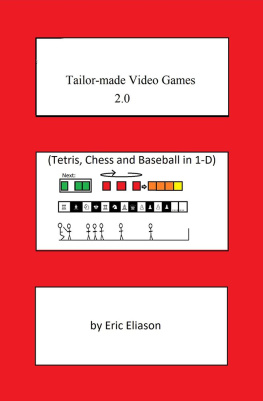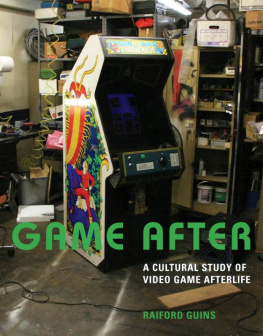World Video Game Hall of Fame - A History of Video Games in 64 Objects
Here you can read online World Video Game Hall of Fame - A History of Video Games in 64 Objects full text of the book (entire story) in english for free. Download pdf and epub, get meaning, cover and reviews about this ebook. year: 2018, publisher: Dey Street Books, genre: Romance novel. Description of the work, (preface) as well as reviews are available. Best literature library LitArk.com created for fans of good reading and offers a wide selection of genres:
Romance novel
Science fiction
Adventure
Detective
Science
History
Home and family
Prose
Art
Politics
Computer
Non-fiction
Religion
Business
Children
Humor
Choose a favorite category and find really read worthwhile books. Enjoy immersion in the world of imagination, feel the emotions of the characters or learn something new for yourself, make an fascinating discovery.
- Book:A History of Video Games in 64 Objects
- Author:
- Publisher:Dey Street Books
- Genre:
- Year:2018
- Rating:4 / 5
- Favourites:Add to favourites
- Your mark:
A History of Video Games in 64 Objects: summary, description and annotation
We offer to read an annotation, description, summary or preface (depends on what the author of the book "A History of Video Games in 64 Objects" wrote himself). If you haven't found the necessary information about the book — write in the comments, we will try to find it.
Inspired by the groundbreaking A History of the World in 100 Objects, this book draws on the unique collections of The Strong museum in Rochester, New York, to chronicle the evolution of video games, from Pong to first-person shooters, told through the stories of dozens of objects essential to the fields creation and development.
Drawing on the World Video Game Hall of Fames unmatched collection of video game artifacts, this fascinating history offers an expansive look at the development of one of the most popular and influential activities of the modern world: video gaming.
Sixty-four unique objects tell the story of the video game from inception to today. Pithy, in-depth essays and photographs examine each objects significance to video game playwhat it has contributed to the history of gamingas well as the greater culture.
A History of Video Games in 64 Objects explains how the video game has transformed over time. Inside, youll find a wide range of intriguing topics, including:
- The first edition of Dungeons & Dragonsthe ancestor of computer role-playing games
- The Oregon Trail and the development of educational gaming
- The Atari 2600 and the beginning of the console revolution
- A World of Warcraft server blade and massively multiplayer online games
- Minecraftthe backlash against the studio system
- The rise of women in gaming represented by pioneering American video game designers Carol Shaw and Roberta Williams game development materials
- The prototype Skylanders Portal of Power that spawned the Toys-to-Life video game phenomenon and shook up the marketplace
- And so much more!
A visual panorama of unforgettable anecdotes and factoids, A History of Video Games in 64 Objects is a treasure trove for gamers and pop culture fans. Let the gaming begin!
World Video Game Hall of Fame: author's other books
Who wrote A History of Video Games in 64 Objects? Find out the surname, the name of the author of the book and a list of all author's works by series.











